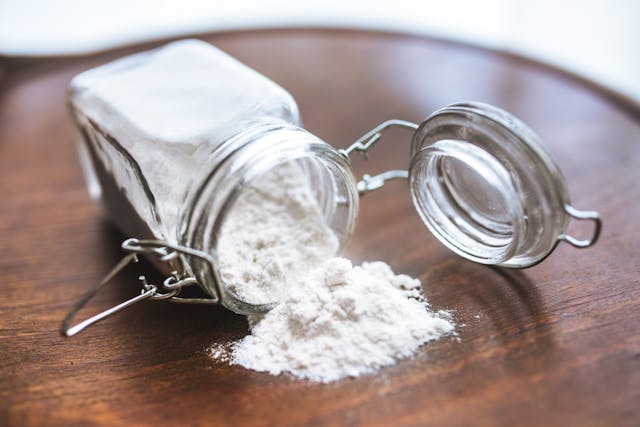
What is baking soda? Baking soda is sodium bicarbonate, which is a salt.
Baking soda has a myriad of uses, but it was first used for baking, hence its name. It was discovered in 1801 in Berlin, by a pharmacist called Valentin Rose the Younger. I don’t know when it was first used in baking, but in 1846 two American bakers started the first factory to mass produce baking soda. Before baking soda was discovered, the cakes that we enjoy today didn’t exist. There were cakes, of course, but they were different to the types we have today. They were heavy and more bready. A lot of cakes would have been like flat pancakes or a form of bread. The only way to make a cake rise, to make it fluffy, was to use yeast. Yeast consumes sugar and produces carbon dioxide and alcohol. This is why it is used for beer and to put the bubbles in champagne. Bread rises because the carbon dioxide bubbles get trapped in the dough. There were no refrigerators at that time and most cooks would make their own yeast from fermented vegetables or fruit. It takes hours for the yeast to make the dough rise and cakes would have been much heavier. That all changed when baking soda was discovered.
From 1796, some bakers used potash in their cakes. Potash is made from lye and wood ash. It is also a salt and these days it is mostly used as a fertilizer. In baking, it did produce carbon dioxide, but it smelled pretty bad. Sodium bicarbonate was discovered in the early 19th century and bakers realized that it produced carbon dioxide without the smell. However, it needs an acid to react with. Some bakers used gone off milk, but it is always dangerous putting sour milk in a cake because you don’t know what it is going to taste like. Other people used an acid called Cream of Tartar, that was a byproduct of making wine, but it was very expensive. In 1856, an agricultural chemist called Eben Norton Horsford experimented with different acids to replace the expensive Cream of Tartar. He discovered that he could get calcium biphosphate, which was an acid, but boiling down animal bones. Through more experimentation he discovered that if he mixed dry sodium bicarbonate with dry calcium biphosphate, they would sit perfectly happily in a pot until water was added and then they would start to react. He called this baking powder. He found a better way to get the calcium biphosphate, took out patents, and started a baking powder company called Rumford. He became rich and fluffy cakes became possible.
What happens when you put baking soda in your cake? Firstly, baking soda and baking powder are slightly different. Baking soda is pure sodium bicarbonate and it still needs an acid to begin the reaction. Baking powder has the acid added to it already and only needs water to begin the reaction. When you put baking soda in, you need the acid still, and many people use citric acid, buttermilk, or even cream of tartar, which is a lot cheaper these days. When you mix baking soda with the acid, you have an acid-base reaction because the baking soda is base. The sodium bicarbonate consists of salt (sodium), one hydrogen molecule, one carbon molecule, and three oxygen molecules. The acid contains hydrogen. When you mix them, the sodium separates into salt, the carbon connects to two oxygen molecules giving carbon dioxide, and the two hydrogen molecules connect to one oxygen molecule, giving water. So, the reaction gives salt, carbon dioxide, and water, making the cake fluffy and moist.
There are far more uses for baking soda than just baking. It is used for cleaning, to help with heartburn and indigestion, to clean teeth, to treat infections, fireworks, fire extinguishers, supplements, and other things, too. Why is it so useful? Well, it works in a fire extinguisher because it also release carbon dioxide when it is heated, which is a great way to put fires out. If you have an oil or grease fire, you should never put flour on it because the powder can ignite. Baking soda will produce carbon dioxide and extinguish the fire. It is an excellent cleaner because it has a very high pH level. It reacts very well with organic materials like kitchen grease and dirt left behind from your body. It is a salt, so it is also a mild abrasive. And that is what I learned today.
Photo by Kaboompics .com: https://www.pexels.com/photo/flour-in-a-jar-5765/
Sources
https://en.wikipedia.org/wiki/Potash
https://en.wikipedia.org/wiki/Sodium_bicarbonate
https://axial.acs.org/cross-disciplinary-concepts/the-science-of-baking-soda
https://en.wikipedia.org/wiki/Eben_Norton_Horsford
